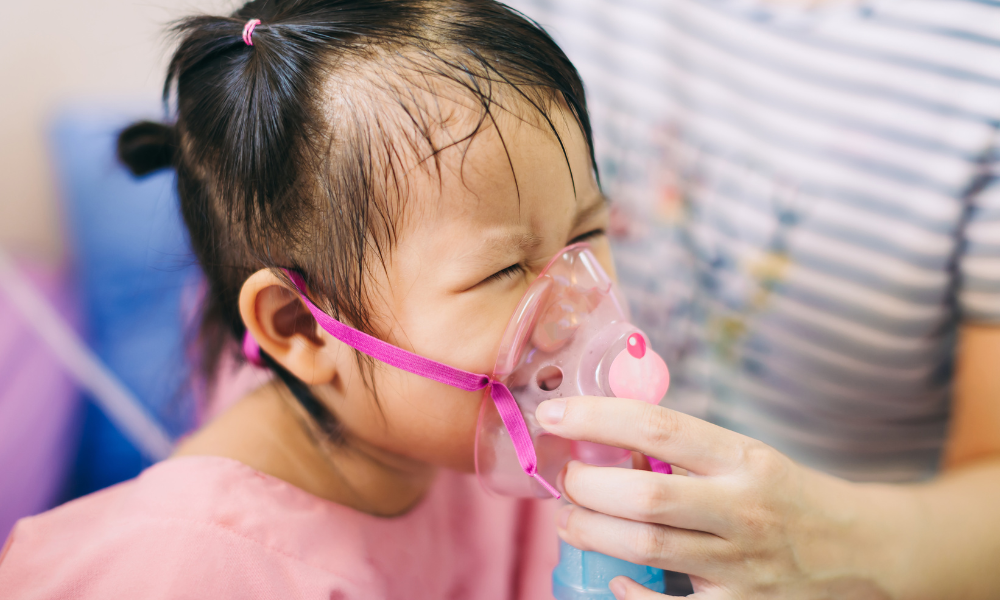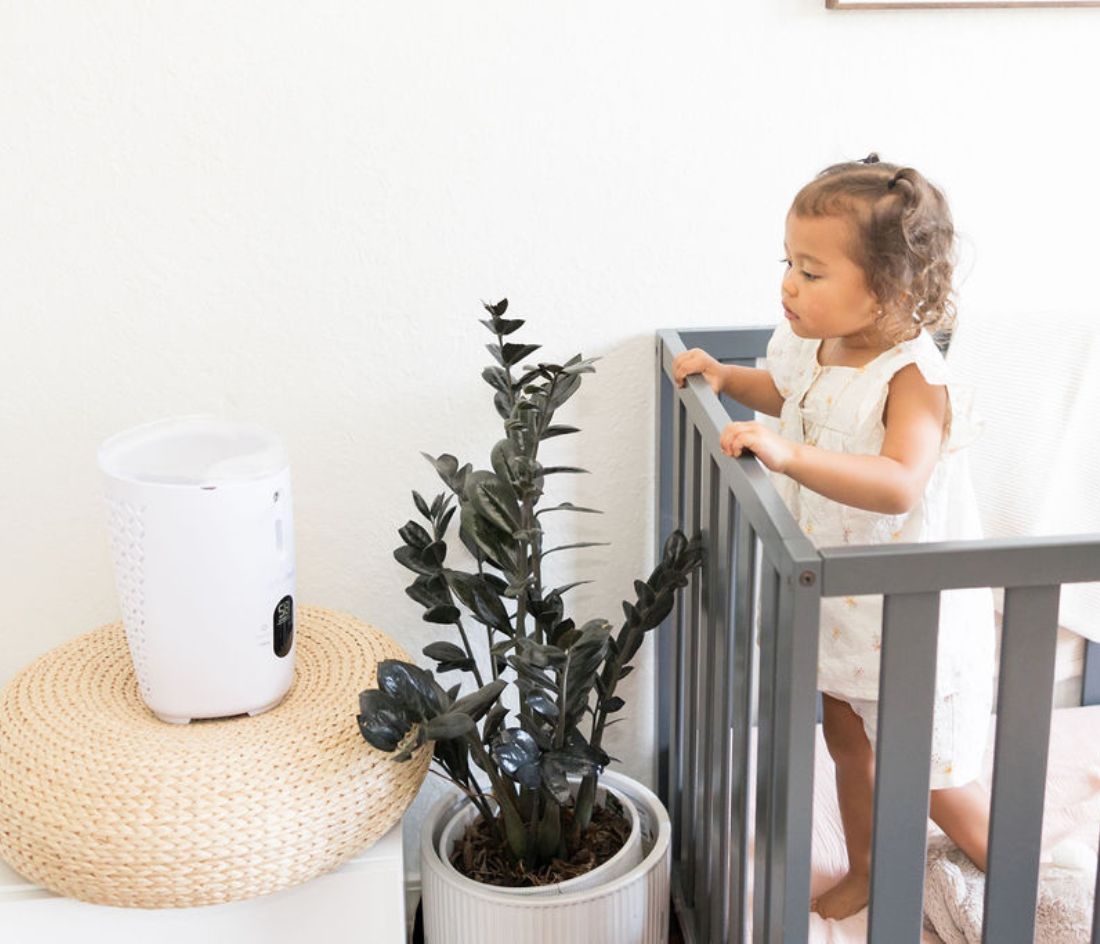Guest post by Holly Sanford, RN
Thanks for joining us for our newborn baby breathing series! If you missed it, last month we covered everything parents need to know about Laryngomalacia.
One of the scariest moments for a parent can be watching your child struggle to breathe. While children are incredibly resilient, they can decompensate more quickly than adults when they are sick. Learning the symptoms of respiratory distress can allow your child to be treated more efficiently.
Signs of Respiratory Distress in Children
Respiratory distress is generally defined as difficulty breathing. Although there are a variety of causes, the most common are bronchiolitis, asthma, pneumonia, croup, anaphylaxis, foreign body in the airway, etc. Providers can quickly diagnose little ones in respiratory distress by observing a few symptoms.

Increased Rate of Breathing
According to the Pediatric Advanced Life Support guidelines, the normal rate of breathing per minute at rest is as follows:
Infant: 30-53
Toddler: 22-37
Preschool: 20-28
School-aged: 18-25
Adolescent: 12-20
Retractions
Retractions occur when the body does not get enough oxygen through normal breathing patterns. Consequently, the body works harder to bring in the needed amount of oxygen. Retractions are often identified by the appearance of the skin sinking in around the neck, breastbone, and/or ribs.
Color Changes
When the child does not have enough oxygen, the body may have a bluish color around the mouth, hands, and feet. The color may also appear pale or grayish if there is a lack of oxygen.

Nasal Flaring
In order for children, especially young children or babies, to obtain more oxygen, they may begin to exhibit nasal flaring. The nostrils will open wider when they inhale to accommodate more oxygen.
Grunting
You may notice a grunting sound during expiration (breathing out) if your child is in respiratory distress. This sound is produced when the body tries to keep the air inside of the lungs to maintain sufficient oxygen levels.
Wheezing
This high-pitched, whistle sound may be heard when the child is breathing in or breathing out. It stems from the lungs and is often related to asthma and/or reactive airway disease caused by viruses in children.
Stridor
Stridor is also a high-pitched sound but typically occurs in the upper airway when the child exhales. Although the sound can be caused by a variety of diagnoses, the most common cause in younger children is croup.
Changes in Alertness
A decrease in the amount of oxygen in your child’s body may cause them to feel tired. Your child may not want to participate in normal activities and desire to sleep more.
Change in Body Position
Sometimes children will change positions to help facilitate breathing. The child may lean forward to take deeper breaths. You may notice head bobbing, which occurs when the little one lifts the chin during inspiration and drops the chin during expiration.

If your child is exhibiting these symptoms, notify your health care provider. Your little one will need to be assessed to identify the appropriate level of intervention and treatment. If your child has a respiratory virus that can be managed at home, the NozeBot will provide quick and easy mucous relief which oftentimes allows for better sleep and increased appetite. Always call 9-11 for emergencies.
If you enjoyed this article, you will love these, too:
- Postpartum Series: Anxiety, Self Love and Giving Ourselves Grace
- Common Mistakes Parents Make When Using a Nasal Aspirator
- What You Need to Know About RSV
- Navigating Back to School Bugs
Holly Sanford is a mother and a pediatric nurse of 9 years with a lifelong passion for helping children and their families. In her free time, she loves cooking new recipes, traveling to unique places and staying active with her family.
The Nozebot is a battery-powered suction device designed to clear nasal congestion in babies and children.



